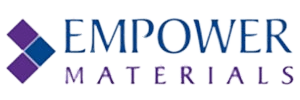Poly(alkylene carbonates) are synthesized through the polymerization of carbon dioxide and epoxides. The products of their combustion are carbon dioxide and water vapor, which are non-toxic, non-flammable, and environmentally safe. They burn cleanly in any environment, oxidizing or inert. They are colorless, amorphous thermoplastic polymers with low glass transition temperatures.
.jpg)
Image Credits: shutterstock.com/Andrii Zhezhera
QPAC Organic Binders for Brazing Applications
QPAC® is ideally suited for use as an organic binder in brazing pastes and solutions.
The Benefits of Using QPAC25 and QPAC40 Organic Binders
The benefits of using QPAC®25 and QPAC®40 organic binders include the following:
- QPAC® is compatible with a variety of filler metals.
- The viscosities and molecular weights of QPAC® can be custom-tailored for specific solution or paste requirements.
- Both grades of QPAC® is naturally “tacky” and their degrees of plasticity can be adjusted as necessary.
- Decomposition is complete through three phases: solid, liquid, and vapor.
- Upon decomposition, QPAC® leaves very low ash residue with the complete burn-out of carbon.
- QPAC® decomposes completely between 250°C - 300°C, which can be as much as 100°C below the decomposition temperatures of other binders.
Other QPAC25 and QPAC40 Organic Binder Applications
Applications of QPAC®25 and QPAC®40 organic binders includes:
- Diamond Powder Bonding
- High Energy Capacitors
- Air Bag Inflator Propellants
- Thick Film Inks
- Die Attach Adhesives
- Ceramic Fiber Processing
Properties of QPAC25 and QPAC40 Organic Binders
The properties of QPAC®25 and QPAC®40 organic binders are outlined in the following table.
|
QPAC®25 - PEC - poly(ethylene carbonate)
|
|
Density
|
1.42
|
|
Chemical formula
|
[CH2CH2OCO2]n or C3H4O3
|
|
Tensile strength
|
500 - 1,500 psi
|
|
Solvents
|
Methylene chloride, Chloroform, and 1,2-Dichloroethane
|
|
Tg
|
25°C
|
|
QPAC®40 - PPC - poly(propylene carbonate)
|
|
Density
|
1.26
|
|
Chemical formula
|
[CHCH3CH2OCO2]n or C4H6O3
|
|
Tensile strength
|
5,000 - 6,000 psi
|
|
Solvents
|
Methylene chloride, MEK, Acetone & Propylene carbonate
|
|
Tg
|
40°C
|

This information has been sourced, reviewed and adapted from materials provided by Empower Materials.
For more information on this source, please visit Empower Materials.